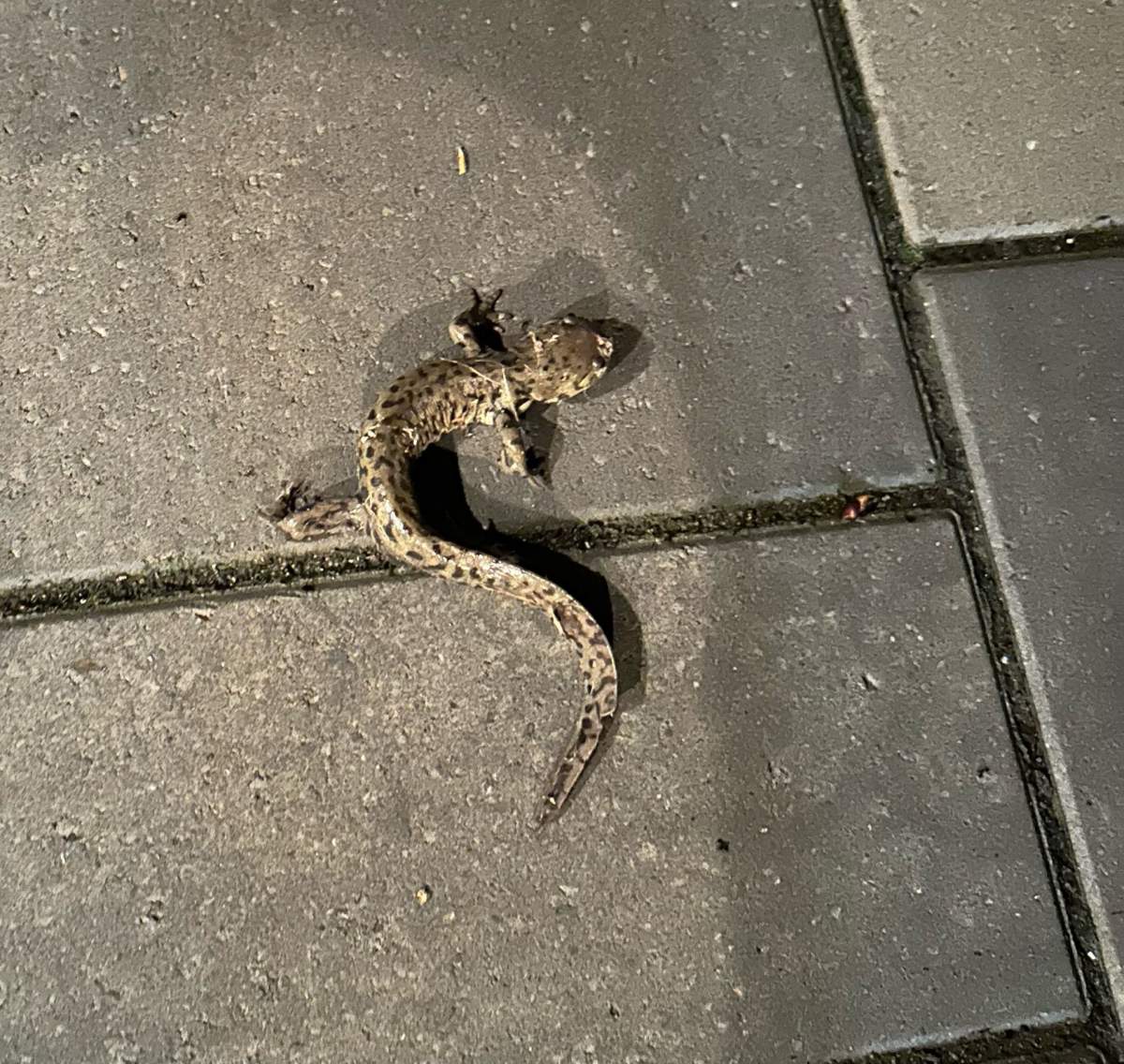Henry Cairney is used to seeing wildlife in his northwest Calgary backyard. It’s so common he set up a wildlife camera to capture videos of the animals undeterred by his fence.

“We’ve two resident moose that come in regularly, just hop over the fence,” laughed Cairney. “Coyotes, bobcats, we’ve had all sorts of animals here.”
Despite the constant parade of wildlife, he was shocked when he took his dog out last week and saw a tiger salamander on his patio.
“We were absolutely stunned because we’ve never seen anything like it before,” said Cairney. “It had these stripes all over it, it looked very unusual.”
At first, he thought it was a lizard or a newt like the ones he would catch growing up in Scotland but says its slow pace made him think he might be wrong.
“Then I saw how slow it moved because lizards usually move a lot faster, I thought ‘That’s not a lizard’.”

Get daily National news
Tiger salamanders are one of two types of salamanders found in Alberta, especially in the southern part of the province. While they are relatively common, they aren’t often seen. They are mole salamanders and spend most of their time burrowed underground, making a sighting like Cairney’s even more unique.
“There’s easy access through the fence at the back there (to a pond) so it obviously just comes in and out as it pleases,” said Cairney.
However, spring is the right time of year to glimpse the elusive amphibians as they return to fishless bodies of water to mate.
“This is when they are coming up and emerging because they need to have that moisture to survive and the cool environment,” explained Brian Keating, a Calgary-based naturalist.
Keating says he has only seen about 4 tiger salamanders in Alberta in his life. Threats to the salamanders’ habitats and breeding grounds, disruption of migration routes and death through roadkill are listed as the reasons the salamanders are classified as “special concern” under the Federal Species at Risk Act.
Parks Canada even installed salamander tunnels in Waterton National Park to help the species survive its full 25-year lifespan.
It’s difficult to get an accurate population count for salamanders in Alberta, but studies done by Parks Canada suggest sites formerly inhabited by salamanders no longer are and the population may be declining.








Comments